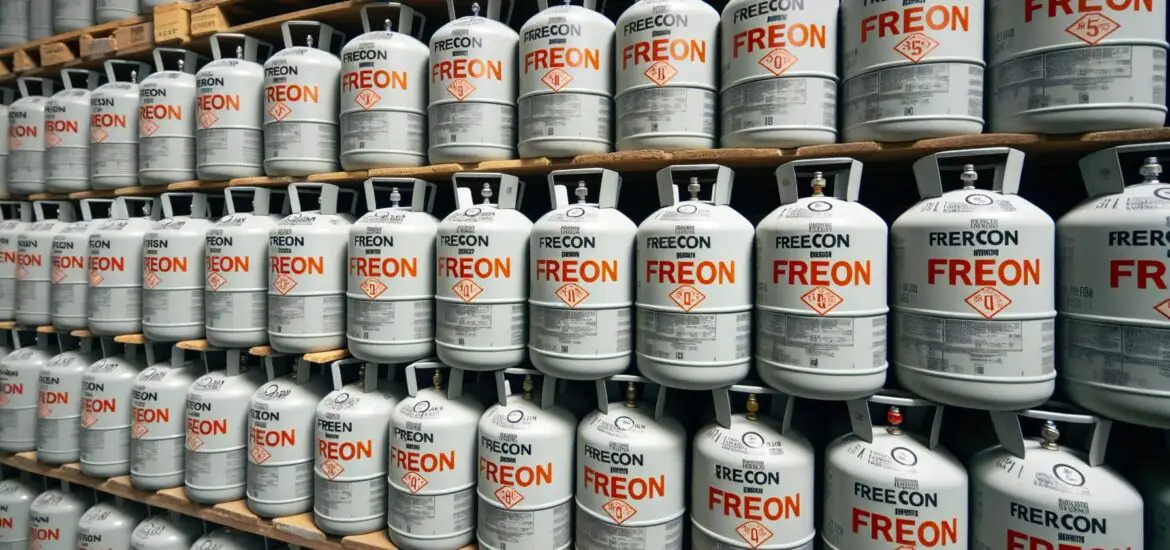Understanding how your air conditioner or refrigerator works often leads to exploring facts about Freon. This chemical compound plays a vital role in most cooling systems. This article aims to give you a complete understanding of Freon, its history, uses, and environmental impact.

Table of Contents
What is Freon?
Freon is a trade name for a family of haloalkane refrigerants manufactured by Chemours company. These are more formally known as chlorofluorocarbons (CFCs), hydrochlorofluorocarbons (HCFCs), and hydrofluorocarbons (HFCs).
Unlike earlier forms of refrigerants like ammonia or sulfur dioxide, Freon is non-toxic and non-flammable. These unique properties made it ideal for household and industrial use when it was introduced in the 1930s.
The fundamental attribute that makes Freon effective as a refrigerant is its ability to change from a liquid to a gas and back to a liquid in a closed-loop system. This phase transition allows it to absorb and release heat, making it crucial for cooling systems.
Common Uses of Freon
Freon’s capabilities extend beyond just home air conditioning. Here are some common applications:
Air Conditioners: Both split and central air conditioning units rely on Freon to cool large and small spaces.
Refrigerators & Freezers: Freon circulates through coils in the back or bottom of these appliances, keeping your food cold.
Vehicle AC Systems: Older cars and some industrial vehicles still use Freon as the primary refrigerant.
Industrial Cooling: Large-scale manufacturing processes also utilize Freon to manage temperature.
Facts About Freon and Environmental Impact
Freon’s stability, which made it appealing, is also its downfall. When it escapes into the atmosphere, it can take years to break down. The chlorine released during this breakdown has a destructive effect on the Earth’s ozone layer, which protects us from harmful ultraviolet radiation.
International agreements like the Montreal Protocol have been enacted to phase out the use of substances like Freon that contribute to ozone depletion. Violating these regulations can lead to substantial fines and legal consequences.
Alternatives to Freon
Because of the environmental concerns associated with Freon, several alternatives have been developed:
R-410A: This is now the standard refrigerant in residential air conditioning systems. It is chlorine-free and therefore less harmful to the ozone layer.
R-134a: This is commonly used in automotive air conditioning systems.
You can purchase this Super Tech R-134a Refrigerant for your car from Walmart.
Hydrofluoroolefins (HFOs): These are a newer class of refrigerants that have a much lower potential to cause global warming.
Before switching to an alternative, it’s crucial to consult a professional, as replacing Freon with an incompatible refrigerant can damage your system.
How to Properly Dispose of Freon
Due to its environmental impact, Freon disposal is highly regulated. Never attempt to vent it into the atmosphere. Instead, consult a qualified technician who can safely remove it using specialized recovery equipment. Once recovered, Freon is either purified for reuse or transformed into other chemicals in a process that neutralizes its ozone-depleting potential.
Many local and state governments offer recycling programs for appliances that contain Freon. When disposing of such an appliance, ensure that the Freon is properly extracted and managed to prevent any environmental harm.